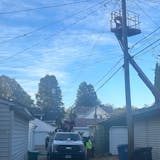Gov. Mark Dayton and several DFL lawmakers are proposing a dramatic expansion of the state's MinnesotaCare program, hoping to create a "public option" that would offer health insurance for any Minnesotan struggling to find and afford coverage.
Announcing the plan Thursday, Dayton said the buy-in option — removing MinnesotaCare's income restrictions and allowing anyone to purchase coverage — is "the single most significant step that Minnesota can take" to shore up its unstable insurance market for individuals.
"It's not working for Minnesota," Dayton said. "Maybe it's working for the insurance companies, but it's not working for Minnesotans."
Dayton estimated that 100,000 Minnesotans, many of them farmers, would benefit from having public competition to private health plans. MinnesotaCare is a state-subsidized insurance program, created in 1992, aimed at people who earn too much for programs such as Medicaid but struggle to afford private coverage.
Dayton's proposal follows a startling report last week that showed that the share of Minnesotans without health coverage jumped from 4.3 percent in 2015 to 6.3 percent last year — the first rise after years of decline — despite a strong economy and labor market.
Republican legislators have generally opposed "MinnesotaCare for all," which was first proposed by DFLers last year. Senate Deputy Majority Leader Michelle Benson, R-Ham Lake, said that despite its surface appeal, the expansion could hurt doctors because MinnesotaCare pays them at lower rates than commercial insurers do. Privately insured patients might also wind up paying more to compensate, she said.
"Remember the last time someone told you that health care was going to be cheaper and easier?" Benson said. "That didn't work."
The proposal also faces resistance from Minnesota hospitals and doctors, who anticipate patients dropping private insurance for public options that pay less.


